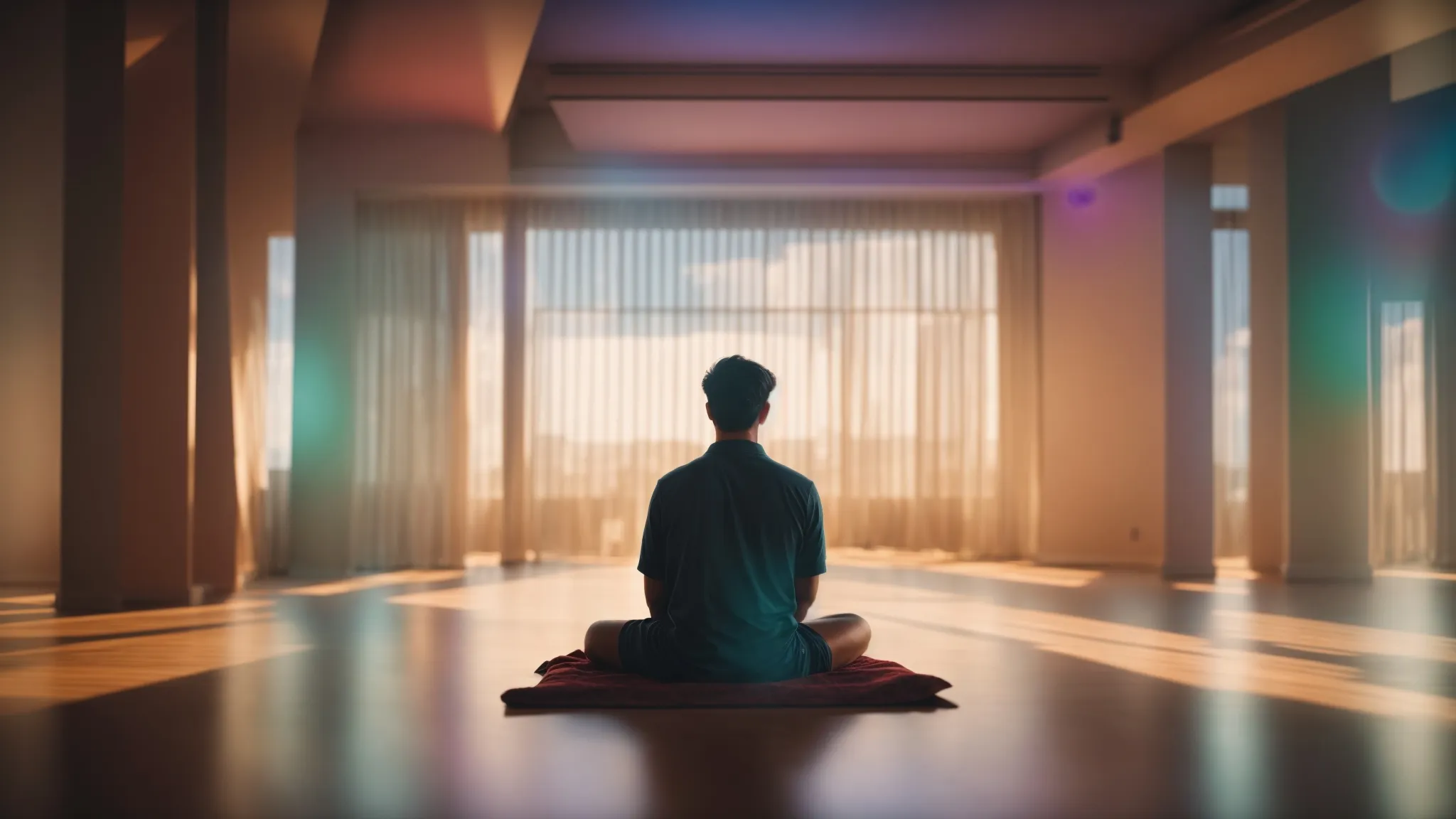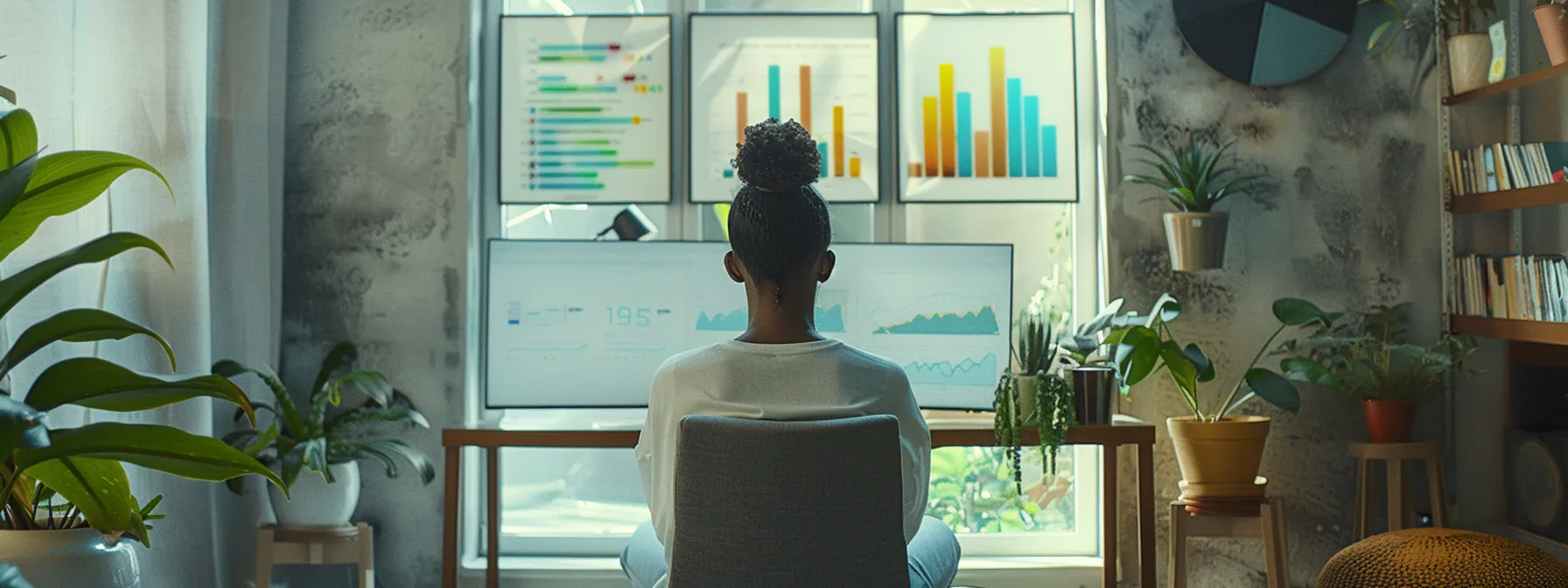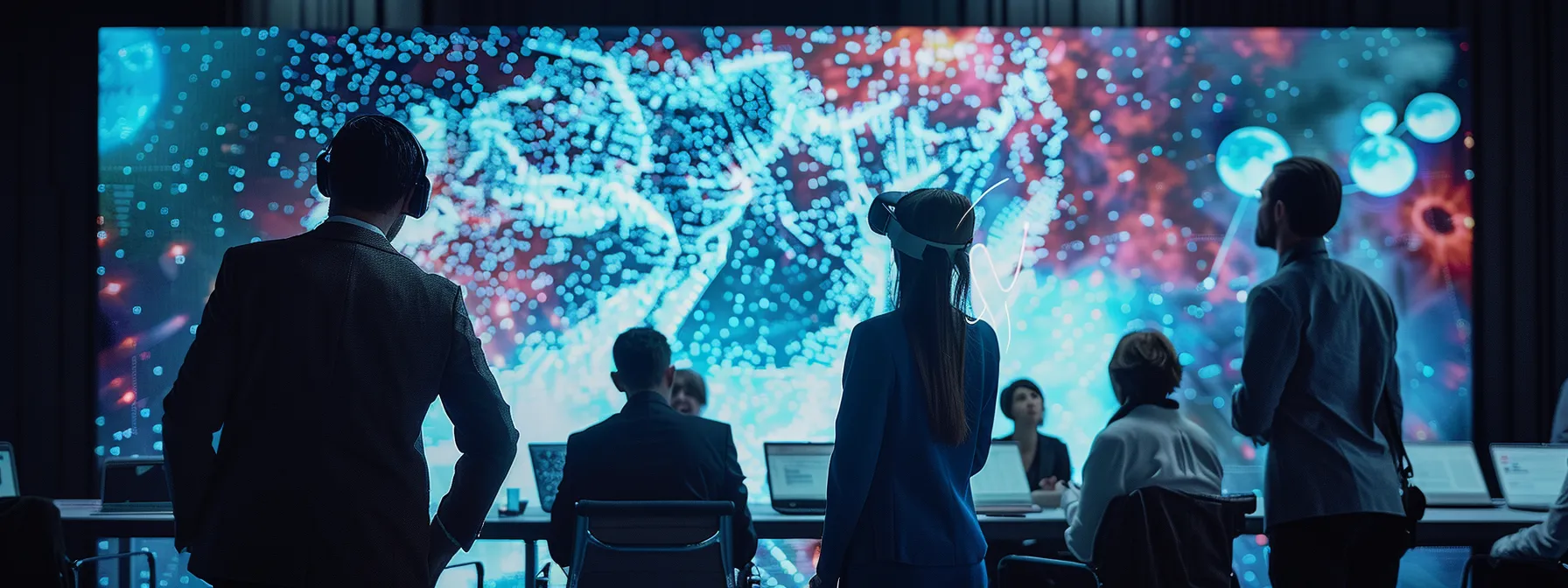Harness Visualization Methods to Reduce Stress
In today’s fast-paced environment, stress is an ever-present challenge affecting many aspects of life, including mental health issues like eating disorders and substance abuse. Visualization techniques, rooted in the transformative principles of Thinking Into Results for Individuals, can be employed in therapeutic settings, such as psychotherapy, to evoke positive change. Using methods like guided imagery, you can tap into your subconscious to address stressors effectively. Imagine having the ability to calm your mind and gain control over anxiety with simple yet powerful visualization practices. Keep reading to uncover a variety of visualization techniques designed to enhance your well-being and reduce stress.
Key Takeaways
- visualization techniques can effectively reduce stress and enhance mental well-being
- engaging your senses during visualization boosts emotional resilience and relaxation
- regular practice of visualization strengthens your ability to cope with life’s challenges
- visualizing positive outcomes helps build confidence and self-motivation
- combining visualization with deep breathing techniques promotes a deeper state of calm
Eight Visualization Techniques for Stress

Visualization techniques can serve as powerful tools to enhance your mental state and manage stress levels effectively. By forming a mental image that resonates with positivity, you set the stage for creating a favorable outcome. As you explore these techniques, consider how they can Thinking Into Results for Individuals not only divert your attention from stressors but also incorporate aspects of meditation and deep breathing to heighten relaxation. Each approach, from guided imagery to using sensory experiences, provides unique avenues to foster emotional resilience and reduce the risk of overwhelming anxiety. Reflecting on happy memories or envisioning healing light enables you to confront a challenging medical diagnosis or a stressful situation with renewed energy. Moreover, visualization can act as a catalyst for self-motivation, empowering you to rise above obstacles and achieve your goals.
1. Creative Visualization of the Favorable Outcome
Creative visualization of a favorable outcome can play a significant role in managing stress and building confidence, especially in challenging situations like grief or dealing with domestic violence. As you visualize success, whether it’s achieving a goal or recovering from health care challenges, you program your mind for positivity and resilience. This technique not only aids in stress management but also helps redirect your thoughts toward more hopeful futures, inspiring you to take proactive steps in your life.
- Identify the situation that causes you stress.
- Visualize a positive outcome related to this situation.
- Engage your senses in the visualization process.
- Focus on the feelings of confidence and relief.
- Repeat the visualization regularly.
2. Visualization as a Diversion From Stress
Utilizing visualization as a diversion from stress involves creating serene mental images that replace overwhelming thoughts. For instance, as a patient navigating the challenges of smoking cessation, you can repeat a calming mantra while picturing your calm and healthy stomach, free from the burdens of nicotine addiction. A systematic review of various techniques shows that engaging in such vivid mental exercises effectively reduces anxiety, allowing you to focus on a more relaxed state of being.
3. Visualization With Deep Breathing
Combining visualization with deep breathing techniques creates a powerful method for stress reduction. As you practice diaphragmatic breathing, envision a peaceful scene that enhances your sense of calm, integrating elements of pranayama to deepen your focus. This approach serves not only as a form of alternative medicine for pain management but also allows the opportunity for personal reflection and prayer, fostering a deeper connection to your well-being.
4. Guided Imagery
Guided imagery offers a structured approach to visualize calming scenes that help alleviate stress and reduce emotional tension. By incorporating techniques like progressive muscle relaxation, you can allow your body to release tension while focusing on serene images, making it easier to manage stressors or even tackle challenges related to weight loss and mental disorders. This method not only connects your mind and body but also enhances your emotional well-being, as emphasized by resources like the Mayo Clinic, further supporting your journey toward a healthier lifestyle.
5. Happy Memory Visualization
Happy memory visualization allows you to tap into moments of joy, creating a calming effect that can significantly lower stress levels. By recalling cherished experiences, you invite feelings of peace and compassion into your mental space, effectively reducing symptoms related to acute stress disorder. This technique not only enriches your emotional state but also promotes a healthy flow of blood and energy throughout your body, enhancing overall well-being.
6. Visualization With the Senses
Visualization with the senses can be a dynamic method to ease stress, particularly for those navigating challenges like attention deficit hyperactivity disorder. By focusing on your breathing, invite vivid sensory details into your mental imagery, such as the warmth of the sun on your shoulders or the aroma of fresh flowers, which can enhance your experience. This technique not only engages your memory of positive sensations but also sharpens your attention, grounding you in the moment and fostering a sense of calm amid chaos.
7. Healing Light Visualization
Healing light visualization creates a radiant imagery that can alleviate worry and enhance your emotional landscape. As you practice this technique, imagine a warm, healing light enveloping you, bringing a sense of peace and comfort akin to the relaxation experienced during tai chi. By engaging in this visualization, you cultivate the skill of transforming your feelings, ultimately contributing to a healthier mindset and aiding your overall diet of mental well-being.
8. Visualization for Self-Motivation
Visualization for self-motivation can bring a sense of relief that extends beyond mere stress management. By envisioning your goals and the steps you need to achieve them, you create a silent space for positive thoughts to flourish and replace feelings of anxiety. This mental rehearsal can be particularly beneficial when coping with conditions like irritable bowel syndrome, as it fosters a mindset capable of promoting better sleep and overall wellness.
- Visualize your goals and the path to achieving them.
- Focus on the feelings of accomplishment and relief.
- Incorporate moments of silence to allow your mind to recharge.
- Repeat your visualization regularly to reinforce motivation.
As you harness the power of visualization techniques to combat stress, you’re tapping into a deeper source of potential within yourself. So, why is visualization so powerful? Let’s uncover the science and strategies that make it a game-changer in personal and professional growth.
Why Is Visualization So Powerful?

Harnessing visualization methods significantly enhances your lifestyle and overall quality of life. By actively engaging in emotionally resonant imagery, you can elevate your mood, making it easier to navigate daily challenges. Techniques such as qigong can amplify these benefits by combining physical movement with mental imagery, fostering a deeper relaxation response.
Your mind holds the power to shape your experiences, and by visualizing positive outcomes, you ignite a transformative process within yourself. This mental rehearsal not only improves emotional resilience but also helps you tackle stressors effectively, allowing you to remain grounded—right down to the smallest aspects, like your toe—during turbulent times.
Incorporating visualization into your daily routine can turn routine moments into opportunities for personal growth. As you practice these techniques, you cultivate a habit of focusing on the positive, empowering you to respond to life’s challenges with greater ease. Doing so leads to long-lasting benefits in your quality of life and emotional stability:
- Elevate your mood through positive imagery.
- Improve your quality of life by reducing stress response.
- Enhance your lifestyle with qigong and visualization techniques.
- Develop mental resilience to handle life’s challenges.
Visualization wields tremendous influence over our mindset and actions. Now, let’s uncover the numerous benefits that mental imagery can bring to your life!
What Are the Benefits of Mental Imagery and Visualization?

Mental imagery and visualization serve as potent tools for enhancing your mental well-being, helping you to manage fear and stress effectively. By training your mind to generate positive visuals, you shift your focus away from negative thoughts, fostering a sense of calm that can lower your blood pressure. This process not only helps you achieve a more relaxed state but also empowers you to approach your challenges with renewed confidence and clarity.
Seeking guidance from a mental health professional can further deepen your understanding of how to effectively utilize these techniques. They can provide tailored strategies to incorporate mental imagery into your daily routine, enabling you to harness its full potential. By embracing visualization, you not only work to reduce stress but also proactively improve your emotional well-being and quality of life.
Mental imagery and visualization not only enhance your performance but can also transform your state of mind. Get ready to explore how these techniques serve as powerful tools for relaxation and stress relief.
How Does Visualization Mental Imagery Serve as a Relaxation Technique?

Visualization mental imagery acts as an effective relaxation technique by creating a healthy distraction from stressors that impact your daily life. As you focus on peaceful scenes, your awareness shifts away from overwhelming thoughts and anxieties, allowing you to experience a calming effect. This process helps lower the tension in your neck and shoulders, areas often affected by stress.
Incorporating soothing sounds or imagery associated with tranquility enhances the relaxation experience. For instance, visualizing a serene beach while listening to ocean waves can further deepen your sense of relief. This technique not only supports emotional well-being, but also helps manage the physical symptoms related to disease, contributing to overall health.
Through consistent practice of visualization, you cultivate a state of calm awareness that benefits both your mind and body. Engaging in this mental imagery regularly allows you to develop resilience against stress, enabling you to tackle life’s pressures with clarity and focus. Implementing these relaxation techniques can significantly improve your quality of life:
Visualization not only calms the mind but also empowers you to tackle challenges head-on. Imagine transforming your anxiety into confidence through the art of focused visualization.
How Can Visualization Help You Control Communication Anxiety?

Visualization can profoundly impact your ability to manage communication anxiety by enhancing your mental health and boosting your confidence. As you engage in creative visualization, you create a mental space that allows you to rehearse conversations in a relaxed rhythm, thereby reducing the overwhelming pressure you might feel in social or professional settings.
Through the practice of relaxation techniques combined with visualization, you can train your mind to respond more positively to anxiety-inducing situations. This method empowers you to visualize successful interactions, enabling you to approach communication with a newfound sense of ease, regardless of any perceived disability that may hinder your confidence.
As you develop a habit of incorporating these visualization practices into your daily routine, you foster resilience against the stressors associated with communication. By repeatedly picturing yourself navigating conversations successfully, you reinforce a mental framework that supports calmness and assurance, ultimately enhancing your overall communication skills and mental well-being.
Harnessing the power of visualization can dramatically reduce communication anxiety, setting the stage for greater self-confidence. Once you experience this transformation, you may wonder how visualization can further amplify your motivation and drive towards your goals.
How Does Visualization Enhance Motivation?

Visualization methods play a critical role in enhancing motivation by instilling a sense of purpose and direction in your life. When you visualize your goals clearly, you engage both your mind and body, easing any anger and frustration that may arise during the journey. This practice helps ground you, especially in moments of uncertainty, by connecting your vision with your abdomen, reinforcing your intention with physical awareness.
As you consciously implement visualization, you cultivate faith in your ability to overcome obstacles. This unwavering belief informs your daily decisions and actions, creating a personal policy that fosters resilience. Every time you visualize success, you’re not just dreaming—you’re building a reliable framework for your ambitions.
Ultimately, embracing visualization as part of your routine empowers you to take control over your emotional landscape. You stimulate positive feelings and energy, which helps you maintain focus on your aspirations while diminishing the weight of stress. Make this practice a priority—and witness how it transforms your mindset into a powerful tool for change:
Visualization opens the door to limitless possibilities, propelling your motivation to new heights. But is it merely a technique, or can visualization be cultivated into a skill that shapes your success?
Is Visualization a Skill?

Visualization is indeed a skill you can develop, allowing you to use your imagination effectively to create mental images that promote relaxation. As a caregiver, honing this skill can significantly enhance your ability to cope with stress and improve your well-being, especially when managing challenging situations, such as caring for someone with dementia. Regular practice enables you to create comforting scenes that soothe your mind and body, bringing a sense of peace that flows through you, right down to the mouth.
Over time, you’ll find that your capacity to visualize calming scenarios improves. Engaging in this relaxation technique allows you to redirect your focus away from stressors, helping you manage anxiety and maintain a clear mind. As you nurture your visualization skills, you empower yourself to tackle the emotional strains that arise in caregiving situations with greater confidence and resilience.
As you practice visualization, you’ll discover that it becomes easier to access this tool whenever stressful circumstances arise. Strengthening your imagination not only enhances your ability to visualize positive outcomes but also gets you in tune with your emotional landscape. By actively cultivating this skill, you create a more balanced approach to navigating life’s challenges, leading you toward a healthier, more harmonious existence.
Understanding how visualization functions in the brain can unlock its full potential. Let’s dive into the fascinating mechanics that make visualization such a powerful tool for personal transformation.
How Does Visualization Work in the Brain?

Visualization is more than just an imaginative exercise; it fundamentally changes how your brain processes experiences. When you engage in these techniques, you effectively alter your cognition by activating neural pathways that promote relaxation. This leads to a decrease in stress levels, which can help lower your heart rate and alleviate headache symptoms associated with anxiety.
As you practice visualization, your brain releases neurotransmitters that enhance feelings of peace. This chemical response not only combats stress but also fosters a sense of well-being similar to what is achieved through therapy. Over time, these practices can create a conditioned response that enables you to better manage emotional and physical stressors.
Understanding how visualization works in your brain empowers you to harness its benefits in daily life. By consistently applying these techniques, you enhance your ability to cope with stress while nurturing your mental health. Consider it a powerful tool in your personal growth arsenal:
- Engage in visualization to activate relaxing neural pathways.
- Experience reduced heart rate and headache symptoms.
- Benefit from neurotransmitter release, enhancing your peace.
- Integrate visualization into therapy for improved mental health.
- Empower yourself to cope better with stress and emotional challenges.
You’ve explored the fascinating mechanics of visualization in the brain. Now, let’s bring that knowledge to life with some practical exercises that you can start using right away!
Sample Visualization Exercises

Begin your visualization journey by creating a mental scene that alleviates the pressure of daily stressors. Imagine yourself enjoying a meal comprised of your favorite foods, paying attention to the taste and texture of each bite. As you savor this experience, allow your mind to drift into a state of relaxation, effectively mitigating tension.
Consider using biofeedback techniques alongside visualization to enhance your stress reduction practice. By focusing on your body’s responses, you can create imagery that reflects a healthy diet and lifestyle, thereby reinforcing your commitment to well-being. Visualizing yourself thriving in this context encourages a positive mindset and empowers you to adopt beneficial habits.
Incorporate guidance from reputable sources, such as the National Center for Complementary and Integrative Health, to design tailored visualization exercises. This approach can help you establish a clear pathway toward understanding the connection between your mind, body, and overall health. As you practice regularly, your ability to manage stress will improve, contributing to a more balanced and fulfilling life.



